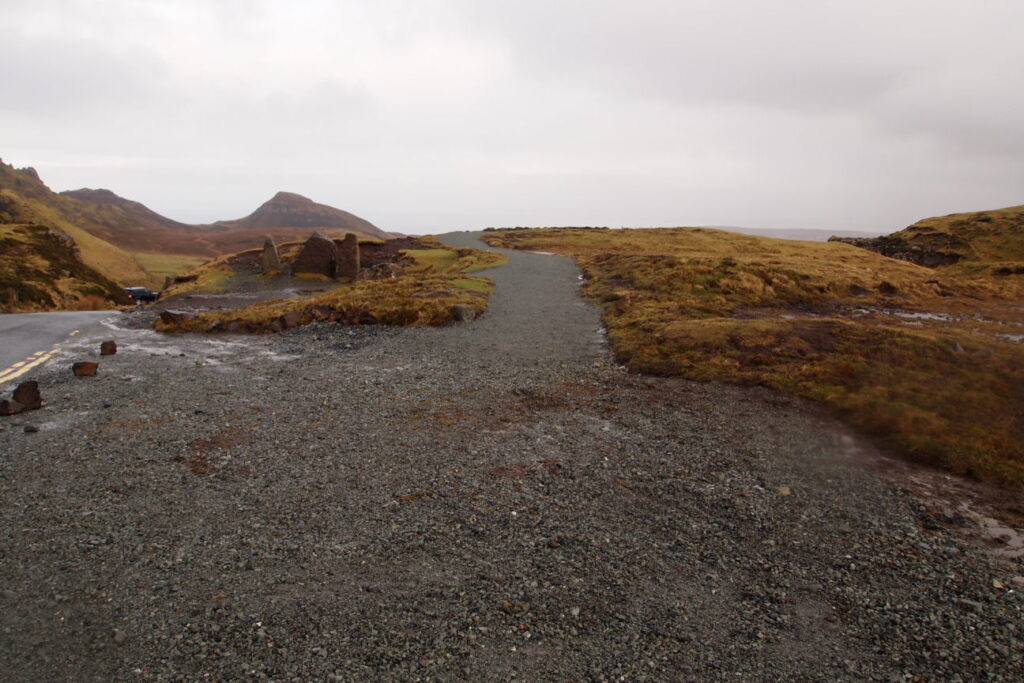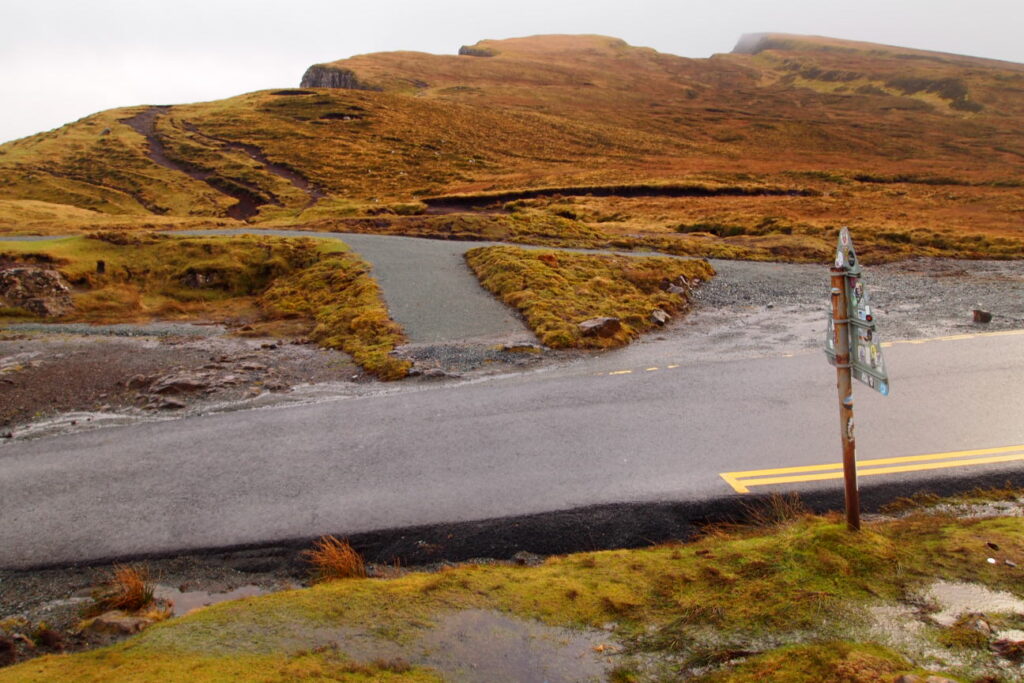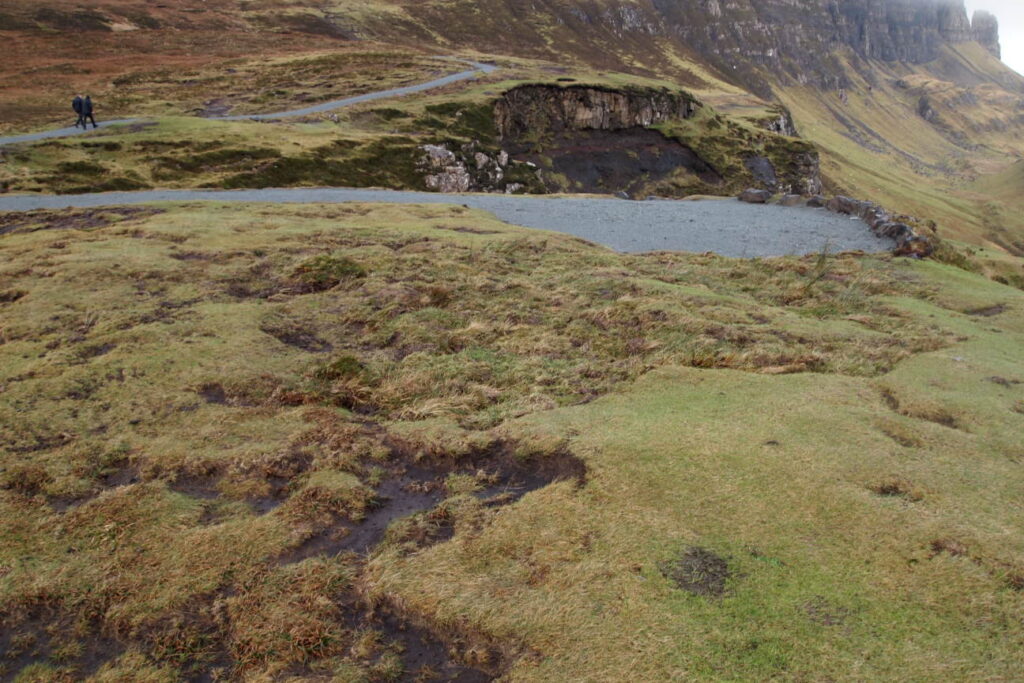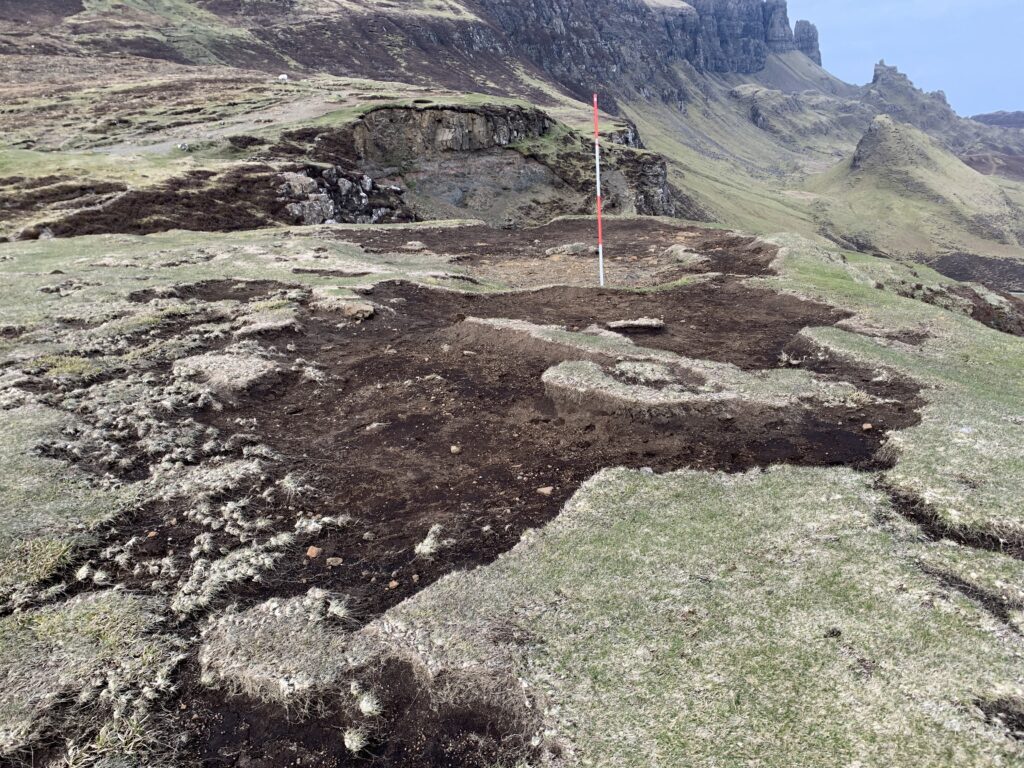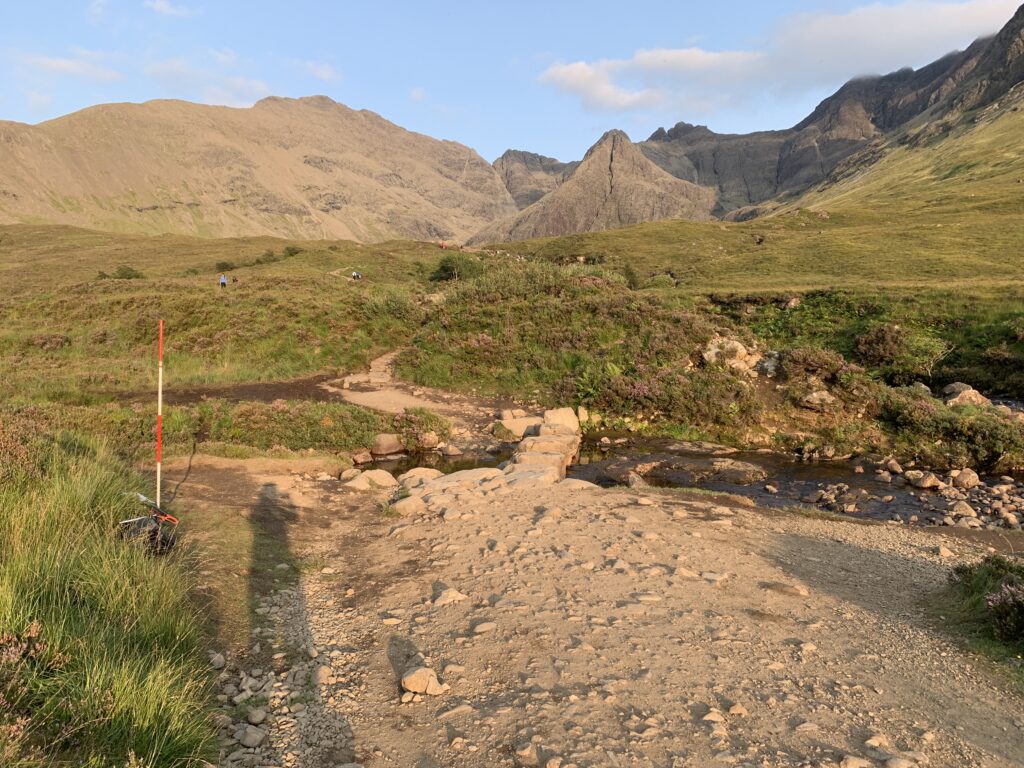

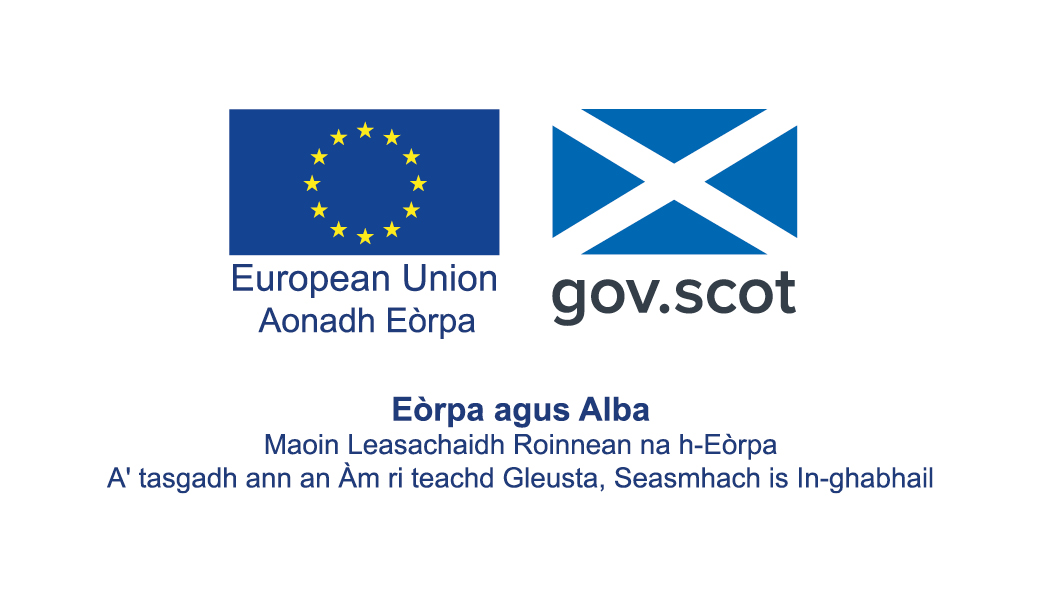
Project Manager Murray Swapp reports on the first year of the Skye Iconic Sites Project
The foundations for this two-year project were laid in April 2021 when contracts were finalised, professionals were hired and administration systems were set up.
A year on, a great deal has been achieved.
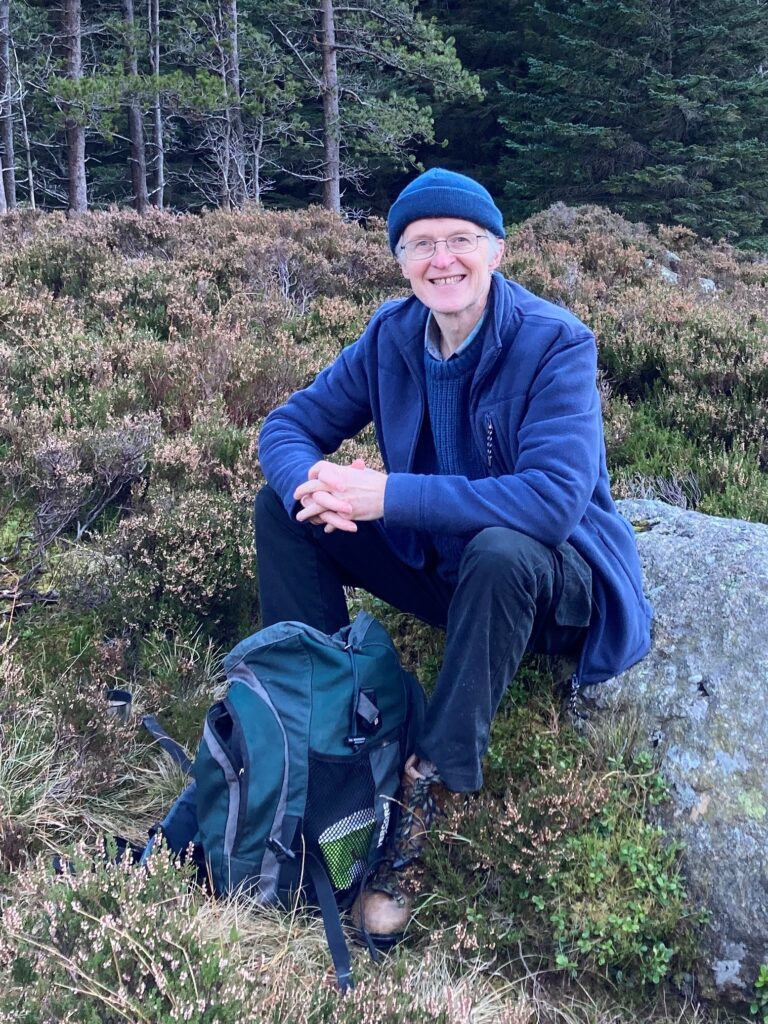
Interpretation programme update
The first task for the interpretation consultants hired by SISP was to produce three reports: a review of current interpretation on the Isle of Skye; an audience appraisal for the three sites; and a proposal for imaginative ways to use Gaelic in the interpretation. Results from the reports, and community consultations, formed the backbone of the project’s coordinated interpretation plan.
The review of the island’s current interpretation studied the condition of information panels and visitor signage at tourist destinations on Skye, including the detail, design and themes conveyed. It also noted information gaps and potential space for new themes to achieve a long-term coordinated approach to interpretation throughout the island.
The consultants conducted a survey of visitors at the three sites, finding out what they thought of the information and themes, and asking for suggested improvements and themes.
Getting Gaelic across to visitors was an essential element of the brief. After meeting Gaelic organisations, side-by-side Gaelic translation was rejected. To give users an understanding and appreciation of the language it was recommended that the panels should convey the meaning of Gaelic names and phrases in terms of place, landscape, songs and poetry, and flora and fauna.
Community consultations were conducted with the Minginish and Staffin communities, and online questionnaires were distributed more widely, to find what content, themes and designs people wanted on information panels. The consultations were also an opportunity to gauge public feedback on the plans.

With the three reports delivered, the interpretation plan is being finalised, and work will start soon on the materials. The next step for the interpretation consultants will be to submit planning applications to Highland Council for information panels at the three sites. Work on this area of the project will go on until March 2023.
Habitat restoration update
After hiring a habitat restoration contractor in August 2021, OATS trialled seed gathering and collection techniques on the Old Man of Storr. It was important to collect species-rich seed direct from this Site of Special Scientific Interest, including from plants such as alpine lady’s mantle and heath bedstraw. Staff trialled the scythe, strimmer and clippers to cut grasses, and a leaf collector to pick up the seeds. The combination of strimmer on low revs and leaf collector was the most efficient for output and speed.

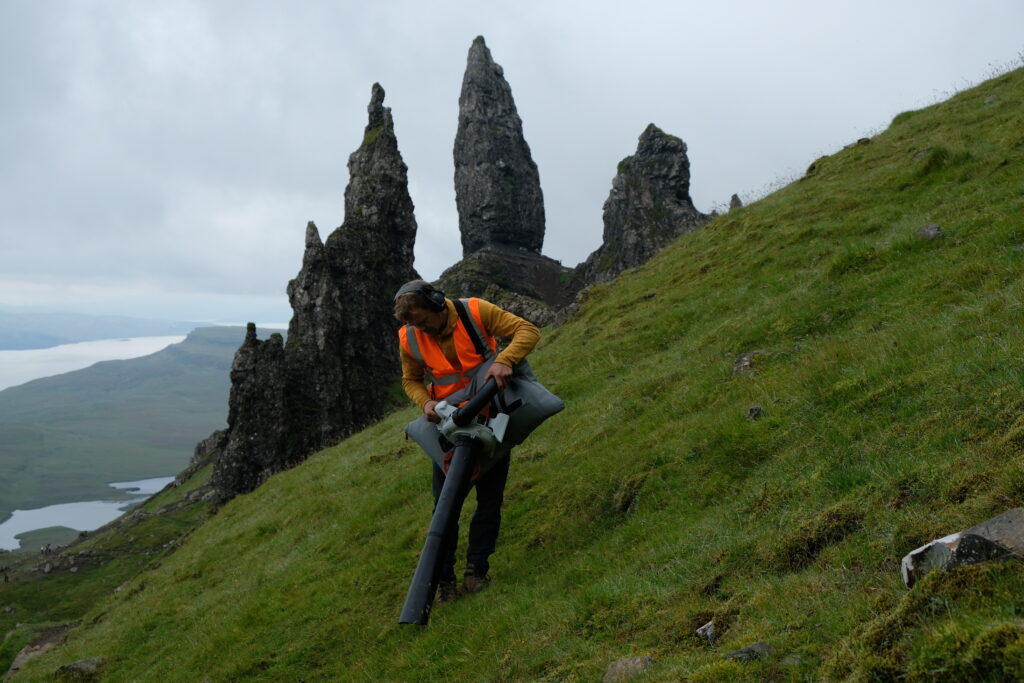
The seed was then spread on a trial area damaged by visitor footfall. The team also experimented with covering the seed with geo jute (hessian netting) pinned and weighed down with rocks. The geo jute covers and stabilises the surface area and offers the seedlings greater shelter to grow. The future use of geo jute plus habitat restoration signage will create an obvious barrier for people.
Other habitat restoration works proposed at the Old Man of Storr involve turfing some of the damaged ground, and turf-lining some of the damaging and erosive drainage features created by foot-fall erosion.
To reduce overgrazing from sheep, 1.3 kilometres of fencing is also being installed on the site, protecting the restored land and the wider species-rich area.
Although some habitat restoration had already been carried out by the path contractor at the Quiraing, the focus for habitat restoration moved to this site in January and February 2022 when quotes were sought for a contractor. Large-scale turfing work was the preferred option here in order to quickly repair the extensive damage.
OATS found a turf donor site, an old quarry with the same grass type as the restoration area, half a mile from the site car park. Permission to use the turf was granted by the Crofter’s Grazing Committee. The 300-millimetre deep turfs were cut and taken from the donor site to the car park, with power barrows moving it to the restoration site, where the turfs were then butted up and tamped in. The results will be closely monitored. OATS will now reseed the 280-square-metre donor site. At the visitor site, some smaller bare peaty areas better suited to reseeding will also be given this treatment.

Under management from OATS and NatureScot, a new ecological clerk of works will oversee seed collecting and planting, turfing, and fencing works across all three sites while assisting in monitoring the sites from now until autumn 2022.
Path building and renovation
In October 2021 OATS put out a tender for a Clerk of Works to oversee path-building works at both the Quiraing and the Fairy Pools.
Now that all three locations included in SISP have fit-for-purpose car parks from which people can easily access the paths, the focus is set firmly on making the paths more accessible to more people. The idea is to provide easier access for the young, the elderly and the disabled, by creating smoother and all-ability surfaces where possible.
Between November and December 2021, 300 metres of new and upgraded paths, two metres wide, were constructed at the Quiraing. This included taking out old and uneven stone path features and replacing them with cambered aggregate paths. Two new viewpoints, and 50 metres of all-abilities path to one of the viewpoints, were also created. A 35-metre stretch of new path had to get planning approval before it could be constructed.
What’s next
Work on two new bridges on the Fairy Pools access path was getting under way in April. These will make it easier for the less confident and less able to cross the burns, particularly in high water.
The bridges will also prevent erosion and habitat damage by people walking off the path to find alternative crossings. They should be completed by the end of May, in time for the busiest months of the tourist season.
The main path-building work at the Fairy Pools will start at the end of October. Cross-drain features, seen as trip hazards by some, will be replaced by plastic pipe culverts, so the 2km path can be upgraded to a smoother aggregate surface. In addition, new paths will be created at viewpoint sites coming off the main path. The final piece of path work will be 230m of stone pitching at the start of the path.
Vehicle monitoring to improve visitor experience
Skye’s destination management organisation Skye Connect is working with Edinburgh University to develop a visitor management system for Skye based on real-time data collected from vehicle sensors and people counters. The aim will be to help visitors choose where to visit at busy times, with dynamic roadside message signs (DMS), and/or through an app. Through SISP, OATS has bought two people-counters and will be buying a vehicle sensor for the Glenbrittle road to the Fairy Pools Car Park. This is as a contribution to the wider Skye Connect/Edinburgh University project which, helped by RPID and Highland Council, will buy a five more vehicle sensors and five people counters for Skye.

